You are here
EMSA: Seafarer Statistics in the EU 2021
EMSA: Seafarer Statistics in the EU 2021
The Editorial Team May 11, 2023 https://safety4sea.com/emsa-seafarer-statistics-in-the-eu-2021/
EMSA (European Maritime Safety Agency) published the Seafarer Statistics in the EU – Statistical review, based on data from certificates and endorsements registered by EU Member States, Iceland and Norway until 31 December 2021. The data was recorded in the STCW Information System (STCW-IS).
The report represents a snapshot of the European labor market in terms of the number of seafarers holding valid certificates and endorsements in 2021. In general terms, a certain stability in the European maritime labor market prevails and might continue to indicate the ability of such labor market to attract new entrants who have replaced those leaving the seafaring career.
There is an indication that over 3,000 officers acquired a certificate of competency (CoC) as ‘OOW 500 GT or more’ or ‘OEW 750 kW or more’ for the first time. Over the years, the number of masters and officers holding valid CoCs issued by EU Member States, has generally been 40% higher than the estimated number of masters and officers crewing the European fleet, indicating that hypothetically, the EU supply of masters and officers could be sufficient to satisfy the demand on said fleet.
According to the report, in reality, a significant number of masters and officers holding CoCs issued by non-EU countries are engaged on board the EU Member States’ fleet (even if on their own, they were not sufficient in number to crew the fleet, with the exception of engineer officers holding non- EU CoCs).
This suggests that at least some of those holding CoCs issued by EU Member States are either working on board vessels registered under other flags or are working in the maritime industry ashore.
#1 Department
The number of masters and officers entitled to serve in the Deck Department (Chapter II of the STCW Convention) was 41% higher than the number of officers entitled to serve in the Engine Department (Chapter III of the STCW Convention). The officers grouped under ‘Alternative certification’ (Chapter VII of the STCW Convention) were reported as holding a multipurpose capacity.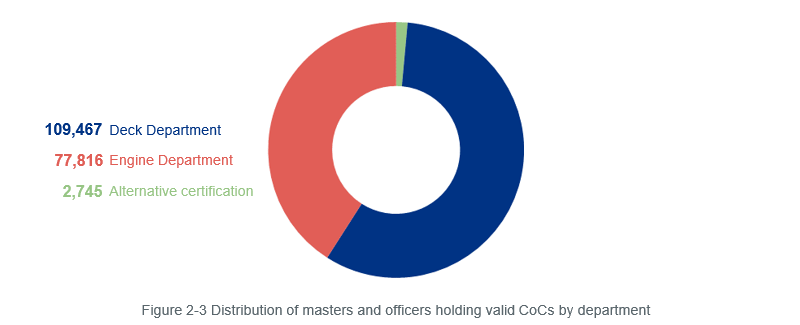
#2 Female officers
The percentage of female officers globally (EU and non-EU) is expected to continue increasing in the coming years. However, it continues to be unlikely that globally females will reach the 2% of the total number of masters and officers already available to serve on board EU Member State flagged vessels; this percentage denotes the proportion of female participation currently achieved in the EU as indicated in the said Figure.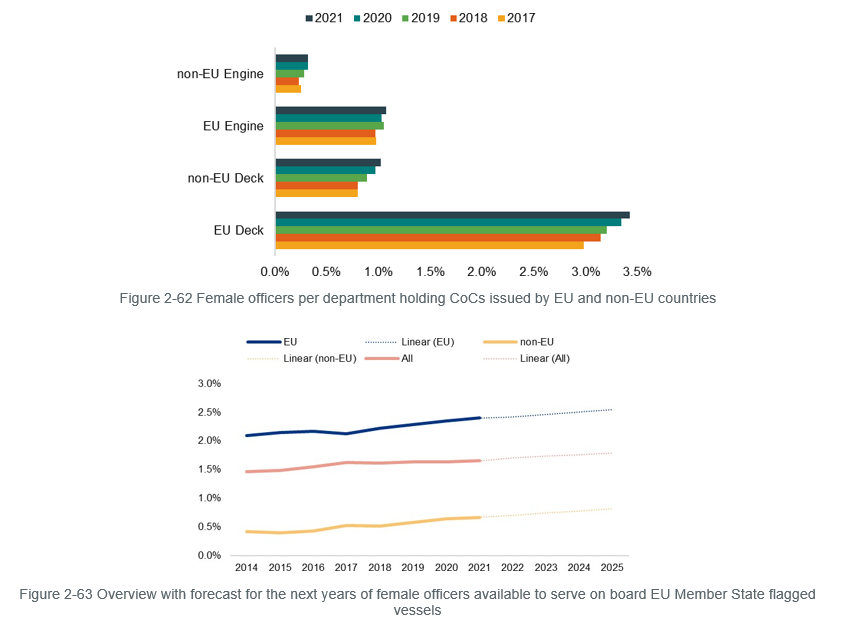
#3 Other nationalities
The 10 nationalities which had more masters and officers available to serve on board EU Member State flagged vessels have remained broadly the same for the past years. The exception since 2020 was the exclusion from this list of the United Kingdom and India that had always formed part of it.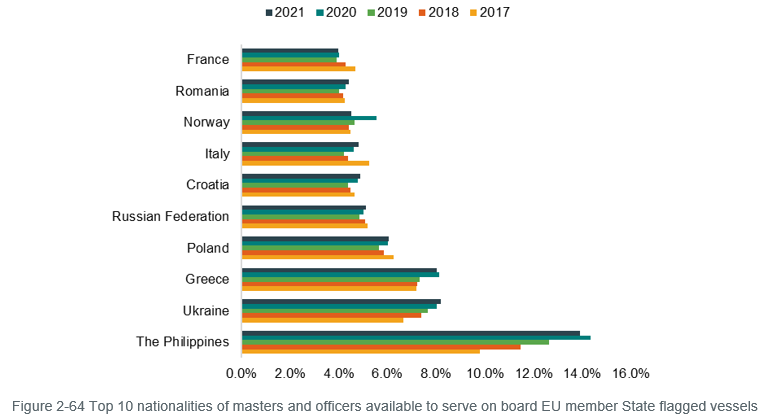
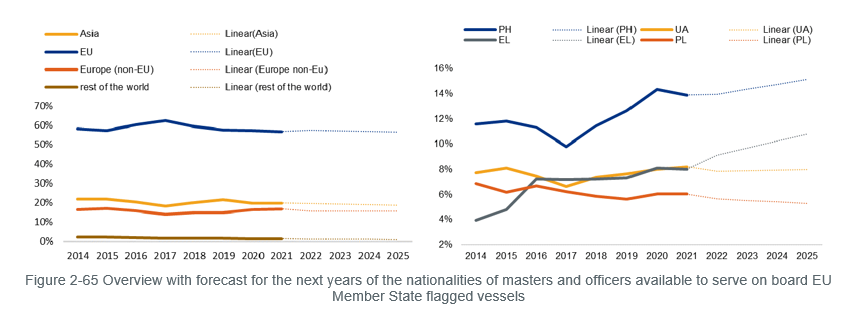
#4 Age
The average age of masters and officers available to serve on board EU Member State flagged vessels has remained stable throughout the years and this prospects to continue, without any indication of an increase in the coming years.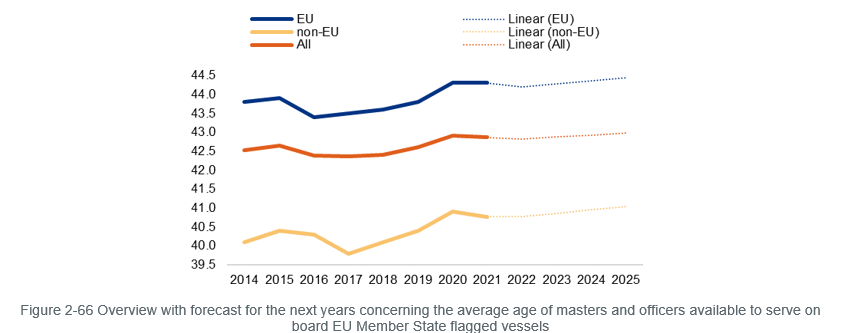
DOWNLOAD THE REPORT HERE https://safety4sea.com/wp-content/uploads/2023/05/EMSA-Seafarers-Statist...

